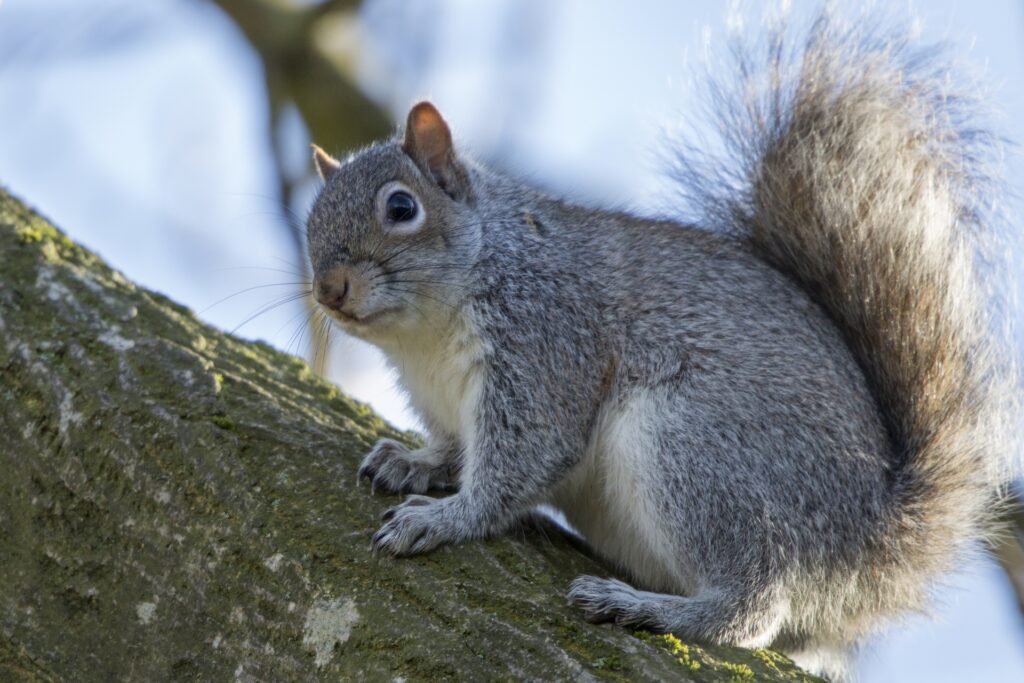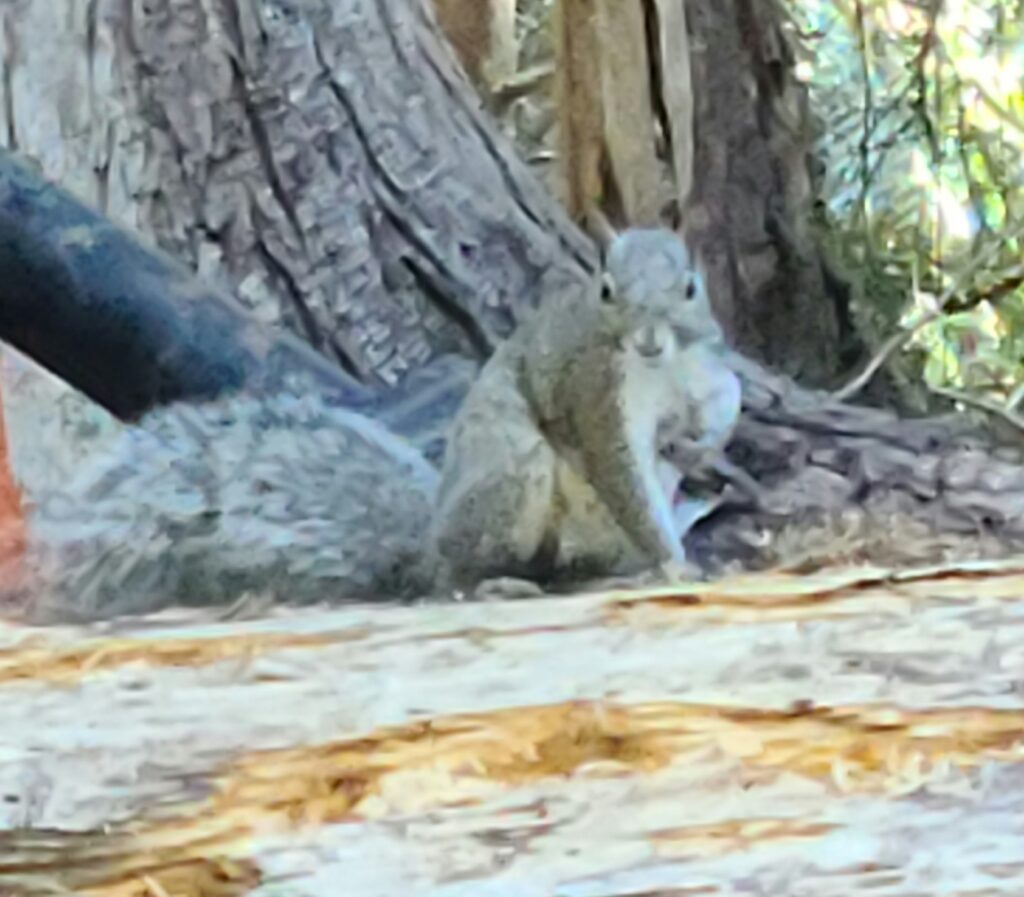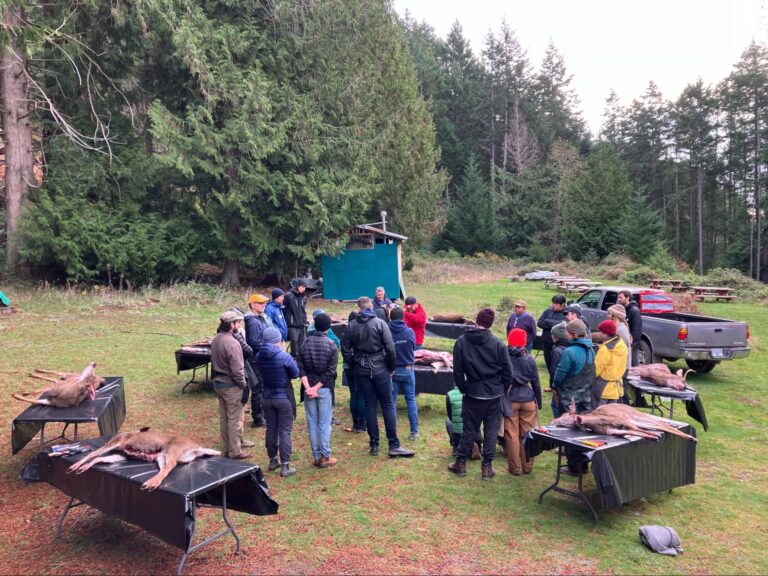Eastern Grey Squirrels on Galiano Island

by Ethan Heckrodt
Notorious throughout Europe and western North America, eastern grey squirrels (Sciurus carolinensis) have been sighted on Galiano Island. They were first introduced in the Salish Sea via an intentional release in Stanley Park in 1909, followed by an accidental introduction on Southern Vancouver Island in 1966. They are now well established in urban areas of the Lower Mainland, Capital Regional District, and Okanagan Valley. The management objective in B.C. is to ethically manage established populations and prevent further expansion into new areas within the Province. As they have been only recently reported on Galiano Island, their ecological impact remains uncertain and immediate action must be taken if establishment is to be prevented.

How did they get here?
- Originating in eastern North America, eastern grey squirrels (Sciurus carolinensis) have been introduced throughout Europe and western North America.
- They are dispersed through a combination of natural and human assisted transportation.
- How they arrived on Galiano Island is unclear, but they were likely aided by accidental human transportation.
What do I look for?
- You can identify eastern grey squirrels by their grey or black colouring, tails that curl over their heads while resting, and large size (they are approximately twice the size of native red squirrels). Comparatively, native red squirrels (Tamiasciurus hudsonicus) have olive brown or rusty red fur, a white eye ring, and their tails do not curl over their heads.
- Look out for large nests made of leaves and twigs as these are a sign that grey squirrels are in the area.
Why are eastern grey squirrels a problem?
- Eastern grey squirrels can cause damage to homes and gardens by digging up lawns, eating garden plants, removing housing materials, nesting in roofs or attics, depleting nut trees, and removing bark from trees.
- They may pose a threat to native species because they have the potential to act as a vector for disease, compete with native birds for tree cavities and bird feeders, and eat bird eggs and nestlings.
Do eastern grey squirrels displace native red squirrels?
- As eastern grey squirrels have dispersed across southwestern B.C., native red squirrel populations have been in decline. Eastern grey squirrels are often scapegoated as the cause of this decline (Dubois 2017), however the trend is better explained by the urbanization of conifer forests which displaces native squirrels and creates habitat for grey squirrels which prefer residential areas (Gonzales 2005).
- Nevertheless, insufficient evidence exists to conclude that there are no significant impacts of eastern grey squirrel range expansion on native species. Eastern grey squirrels may displace native squirrels by competing with them for habitat and resources and as vectors for disease (Government of British Columbia 2009), although this has not yet been demonstrated in BC. Because Galiano Island is habitat to both, there is potential for conflict between grey and red squirrels.
What can community members do to help?
- The first step is to report sightings of eastern grey squirrels on the Report Invasives BC app or online at https://forms.gov.bc.ca/industry/report-an-invasive-species/. The Ministry of the Environment recommends noting what time of year eastern grey squirrels are present and if they are co-occurrent with native red squirrels. Reports go directly to the relevant local land manager where the species is reported, allowing them to obtain an accurate distribution of the species and minimize their future spread.
- You can also take photos of the squirrels and upload them as observations on the iNaturalist app or website: https://www.inaturalist.org/
- Other actions you can take to discourage eastern grey squirrels include not feeding them, controlling access to garbage and compost, using a squirrel-proof bird feeder and/or mixing ground cayenne pepper (or another squirrel deterrent) to bird feed.
How can grey squirrel populations be managed on Galiano?
- There are currently no programs or funding sources in the Province dedicated to the control or elimination of eastern grey squirrels; however, they are a Schedule C species, meaning the best management approach is for community members to hunt and/or trap them.
- They can be captured or killed anywhere, at any time, in B.C. and you do not need a permit or Provincial hunting license.
- You must follow all applicable federal, provincial, and municipal regulations restricting the use of firearms and hunting and trapping methods.
How can I trap a grey squirrel?
- We recommend using live-capture traps to avoid accidental red squirrel casualties.
- The size of trap suitable to catch eastern grey squirrels is 7” X 8’ X 24”.
- If trapping, check the trap daily and do not leave it open if you cannot check it on a daily basis.
- If you trap a squirrel, check the photos and physical characteristics listed above to ensure it is an eastern grey squirrel not a native red squirrel.
- If it is indeed an eastern grey squirrel, please respectfully and humanely exterminate the animal. See the BC SPCA list of legal and illegal methods for doing so: https://spcabc.b-cdn.net/wp-content/uploads/best-practices-squirrels.pdf.
- Please note that these methods are not recommended by the SPCA, but are the best option given the present situation.
- There is the option to respectfully process the animal so nothing goes to waste. Dispose of the remains in a digester or alternative so the smell does not become an attractant.
Can grey squirrels be relocated?
- While the BC SPCA recommends releasing them into established urban populations, it is illegal to relocate live-trapped eastern grey squirrels beyond 1 km in the Gulf Islands, so we cannot recommend releasing them in Vancouver or Vancouver Island where established populations occur.
References
BC SPCA. (2018). Grey Squirrels: Wildlife Control Best Practices, https://spcabc.b-cdn.net/wp-content/uploads/best-practices-squirrels.pdf
Dubois, S. (2017). Grey Squirrels in Canada, Invasive Species or Scapegoat, Island Conservation, https://www.islandconservation.org/grey-squirrels-canada/
Government of British Columbia. (n.d). Reporting Invasive Species, https://www2.gov.bc.ca/gov/content/environment/plants-animals-ecosystems/invasive-species/reporting-invasive-species
Government of British Columbia. (n.d) Invasive Mammals, https://www2.gov.bc.ca/gov/content/environment/plants-animals-ecosystems/invasive-species/priority-species/mammals
Government of British Columbia. (2009). Frequently asked questions: Eastern Grey Squirrels, https://www.env.gov.bc.ca/van-island/wildweb/pdf/Squirrel_FAQ_10_July_09.pdf
Gonzales, E. K. (2005). The distribution and habitat selection of introduced Eastern Grey Squirrels, Sciurus carolinensis, in British Columbia. Canadian Field-Naturalist 119(3): 343-350, https://www.canadianfieldnaturalist.ca/index.php/cfn/article/view/143/143



